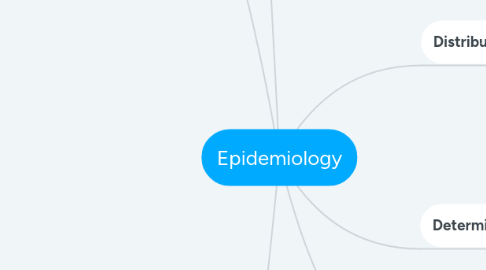
1. Concept of Disease Occurrence
1.1. Causation
1.1.1. Agent, host, and environmental
1.2. Natural History and Spectrum of Disease
1.3. Chain of Infection
1.4. Epidemic Disease Occurence
1.4.1. Level of Disease
1.4.1.1. Endemic
1.4.1.2. Hyperendemic
1.4.1.3. Sporadic
1.4.1.4. Epidemic
1.4.1.5. Outbreak
1.4.1.6. Cluster
1.4.1.7. Pandemic
1.4.2. Epidemic Patterns
1.4.2.1. Common Source
1.4.2.1.1. Point
1.4.2.1.2. Continous
1.4.2.1.3. Intermittent
1.4.2.2. Propagated
1.4.2.3. Mixed
1.4.2.4. Others
2. Public Health States and Implication
2.1. Assessing the community’s health
2.1.1. What are the actual and potential health problems in the community?Where are they occurring?
2.1.2. Which populations are at increased risk?
2.1.3. Which problems have declined over time?
2.1.4. Which ones are increasing or have the potential to increase?
2.1.5. How do these patterns relate to the level and distribution of public health services available?
2.2. Functions
2.2.1. Public Health Surveillance
2.2.2. Field Investigation
2.2.3. Analysis
2.2.4. Evaluation- Effectiveness and Efficiency
2.2.5. Linkages- Association and Stakeholder Management
2.2.6. Policy Development
2.3. Outbreak Investigation
2.3.1. Prepare for field work
2.3.2. Establish the existence of an outbreak
2.3.3. Verify the diagnosis
2.3.4. Construct a working case definition
2.3.5. Find cases systematically and record information
2.3.6. Perform descriptive epidemiology
2.3.7. Develop hypotheses
2.3.8. Evaluate hypotheses epidemiologically
2.3.9. As necessary, reconsider, refine, and re-evaluate hypotheses
2.3.10. Compare and reconcile with laboratory and/or environmental studies
2.3.11. Implement control and prevention measures
2.3.12. Initiate or maintain surveillance
2.3.13. Communicate findings
3. Approach
3.1. Case Definition
3.1.1. Clinical
3.1.2. Clinical
3.2. Studies
3.2.1. Descriptive Studies
3.2.1.1. Time
3.2.1.1.1. Seasonality
3.2.1.1.2. Epidemic Period
3.2.1.1.3. Secular ( long term)
3.2.1.2. Person
3.2.1.2.1. Demographic
3.2.1.3. Place
3.2.1.3.1. Geographical
3.2.2. Analytical Studies
3.2.2.1. Experimental
3.2.2.1.1. Clinical Trial
3.2.2.1.2. Community Trial
3.2.2.2. Observational
3.2.2.2.1. Cohort
3.2.2.2.2. Case Control
3.2.2.2.3. Cross Sectional
3.3. Measures
3.3.1. Risk
3.3.1.1. Frequency Measures
3.3.1.1.1. Frequency Measures
3.3.1.1.2. Mortality
3.3.1.1.3. Birth Measures
3.3.2. Association
3.3.2.1. Risk Ratio
3.3.2.2. Rate ratio
3.3.3. Public Health Impact
3.3.3.1. Attributable proportion
3.3.3.2. Vaccine efficacy or vaccine effectiveness
4. Distribution
4.1. Frequency
4.1.1. No. of Health Events
4.1.2. relationship to size of population
4.2. Pattern ( Descriptive Epidemiology)
4.2.1. Time
4.2.1.1. Secular
4.2.1.2. Seasonal
4.2.1.3. Epidemic Period
4.2.2. Person
4.2.2.1. Age, Sex, Socio economony
4.2.3. Place
4.2.3.1. Geographical
5. Determinants
5.1. Exposure
5.1.1. Outcomes
5.1.1.1. Epidemiologic Approach
